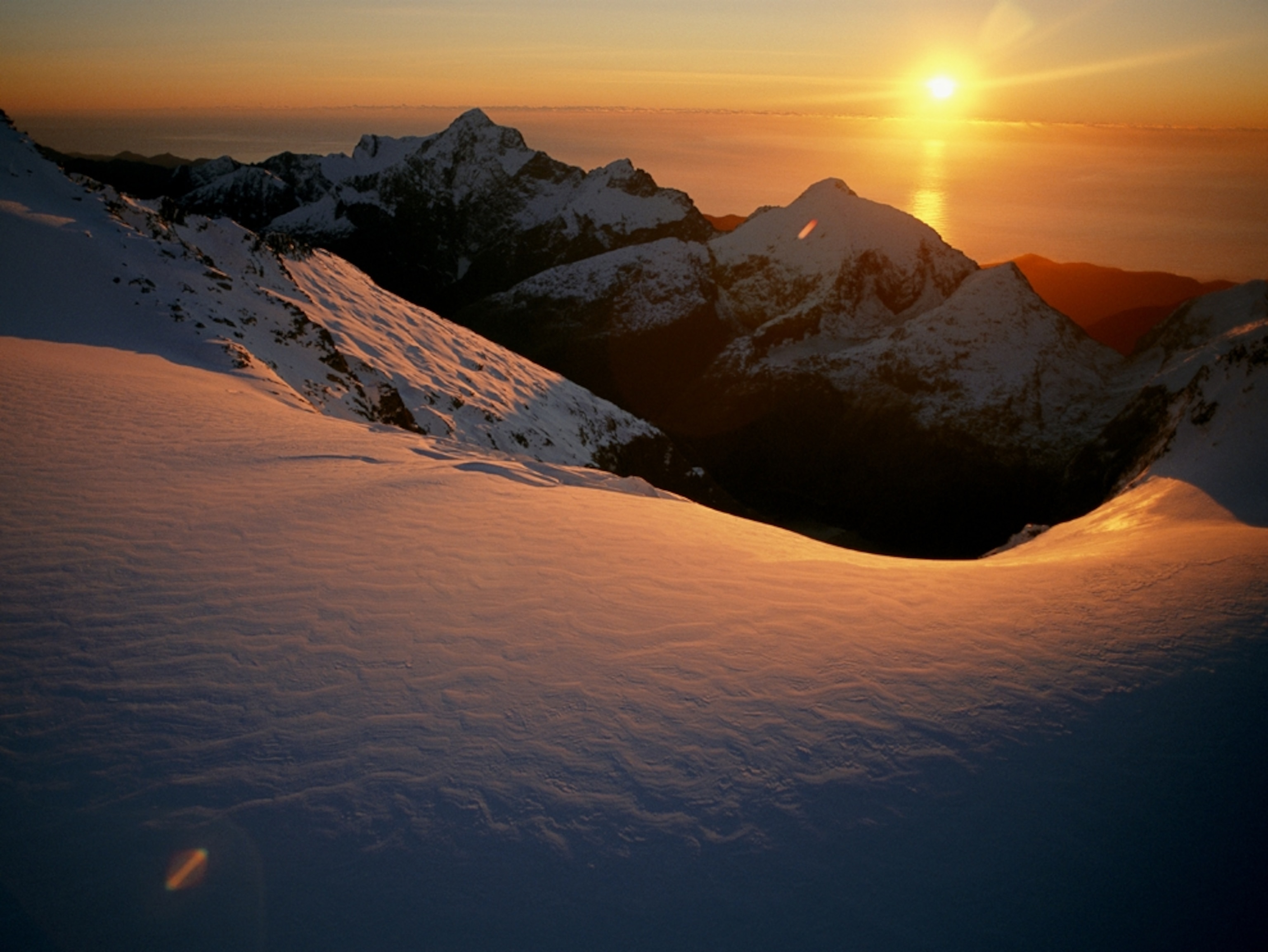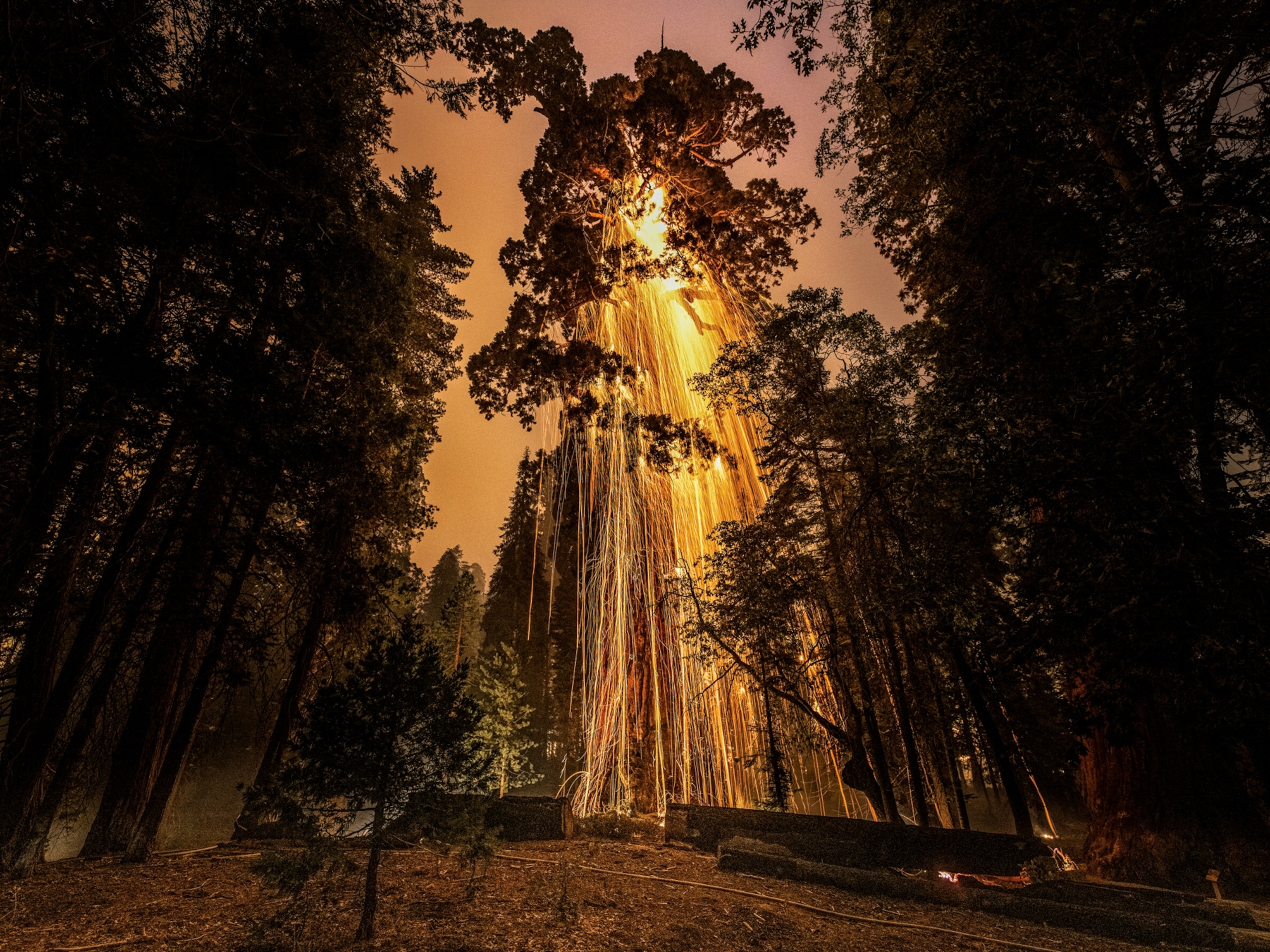Listen to 30 years of climate change transformed into haunting music
The musical composition is designed for a string quartet and shows how climate change has altered Earth's inherent balance.

Think of the most moving piece of music you have ever heard. That a melody can tug at the heart strings or send an army to battle is a compelling power—and now, a Japanese scientist is trying to harness music’s moving quality to inspire action on climate change.
He does this in the form of a string quartet, No. 1, Polar Energy Budget. Using a process known as sonification, geoscientist and musician Hirota Nagai turns satellite data collected from the Arctic and Antarctic into a haunting six-minute piece that asks listeners to feel, rather than intellectually understand, the ways that human activity are affecting the planet.
“I aim to convey not only environmental issues but also the intricately crafted systems of the Earth and the entire 4.5-billion-year story behind them,” says Nagai, who is a geo-environmental scientist at Rissho University. In a time when global environmental awareness is urgent, Nagai says, “I hope to draw attention to the complexity and magnificent order of the Earth's mechanisms.”
The research project that led to the composition was published on April 18 in the journal iScience.
Haunted melodies
The music takes the form of a quartet written for two violins, viola, and cello. Nagai matched the instruments’ melodies with data collected between 1982 and 2022 from four polar locations: an observation site on the Greenland Ice Sheet, a satellite communication facility in the Svalbard archipelago, and two Antarctic research stations. Then, he used a computer sonification program to translate the data on solar radiation, infrared radiation from the atmosphere, surface temperature, cloud thickness, and precipitation into varying musical pitches to represent changes over time.
Nagai says he based the composition on the concept of polar energy balance. Because the polar regions are so sensitive to the impacts of climate change, they can reveal the profound effects of that and solar energy on Earth as a whole.
“While attention has been drawn to global warming, behind this lie the intricate mechanisms of energy exchange,” Nagai explains. “When that balance is disrupted by the increase of greenhouse gases, disorder ensues.”
The six-minute piece was played live for the first time in March 2023 at Tokyo’s Waseda University. A filmed performance by Japan’s PRT Quartet was also released on YouTube.
Igniting emotion
The idea to sonify data—converting the information into sound—has been used to great effect in other sciences, too. For example, NASA has used the technique to sonify astronomical features including galaxies and nebula.
“Music is, like they say, a universal language and one that I think can reach a lot of people in ways that the usual tools used by climate scientists just can't most of the time,” says climate scientist Scott St. George. Together with composer Daniel Crawford and a team at the University of Minnesota, he created two of the first popular climate data-based compositions, “Song of Our Warming Planet,” and “Planetary Bands, Warming Worlds.”
“We've tried the regular way to communicate about climate change and it's successful to a degree, but not really to the level that we need it to be,” St. George says.
“So often, climate change is something that we think about or hear about, but when we turn climate data into sound or more properly into music, then it becomes something that we can feel. It’s that visceral response that makes this kind of project successful.”
In the new piece, Nagai expands the role of artistic interpretation. Dubbing his process “musification,” Nagai employs classical compositional strategies such as varying dynamics, lengthening tones, emphasizing melodic lines, and developing rhythms to build tension and create emotional release.
“In reality, the atmosphere of the melody can be manipulated extensively based on the parameters set by the composer, even if the original data is the same,” he says.
Nagai hopes his work inspires others to turn climate data into art.
“By proposing and practically demonstrating a methodology for creating music from data, I hope to raise awareness of the untapped resource of earth science data, which is an endless source of inspiration for artists,” he says. “I believe it is essential to usher in an era where non-scientists can freely manipulate earth science data for entirely new purposes.”
You May Also Like
Go Further
Animals
- What would the world look like without mosquitoes?What would the world look like without mosquitoes?
- Social media loves to villainize dolphins. Here's why it's wrong.Social media loves to villainize dolphins. Here's why it's wrong.
- How did wolves evolve into dogs? New fossils provide cluesHow did wolves evolve into dogs? New fossils provide clues
- This unorthodox method is saving baby parrots from extinctionThis unorthodox method is saving baby parrots from extinction
- A deadly disease that affects cats big and small found in U.S.A deadly disease that affects cats big and small found in U.S.
Environment
- ‘Corn sweat’—and other weird weather phenomena—explained‘Corn sweat’—and other weird weather phenomena—explained
- A sea tornado sank a yacht. We might see them more often.A sea tornado sank a yacht. We might see them more often.
- How billions of dollars are revolutionizing ocean explorationHow billions of dollars are revolutionizing ocean exploration
- Where to go stargazing in Chile according to a local astronomer
- Paid Content
Where to go stargazing in Chile according to a local astronomer
History & Culture
- Did Babe Ruth really ‘call’ this legendary home run?Did Babe Ruth really ‘call’ this legendary home run?
- The real history behind the legend of China's Monkey KingThe real history behind the legend of China's Monkey King
- How new technology transformed the American workforceHow new technology transformed the American workforce
- This secret Civil War sabotage mission was doomed from the startThis secret Civil War sabotage mission was doomed from the start
- This rare burial site reveals secrets about the Sahara's lush pastThis rare burial site reveals secrets about the Sahara's lush past
Science
- Why some say tennis is 'the world's healthiest sport'Why some say tennis is 'the world's healthiest sport'
- Your body ages rapidly at 44 and 60. Here's how to prepare.Your body ages rapidly at 44 and 60. Here's how to prepare.
- How do gold nuggets form? Earthquakes may be the keyHow do gold nuggets form? Earthquakes may be the key
- Astronauts getting stuck in space is more common than you thinkAstronauts getting stuck in space is more common than you think
Travel
- These are the must-see sights of Italy's Veneto regionThese are the must-see sights of Italy's Veneto region
- A guide to St John's, Atlantic Canada's iceberg capitalA guide to St John's, Atlantic Canada's iceberg capital




